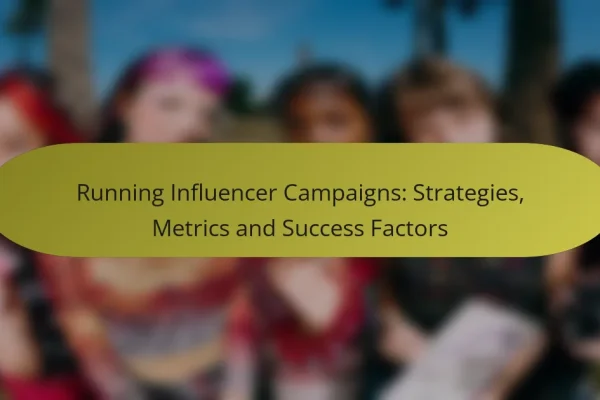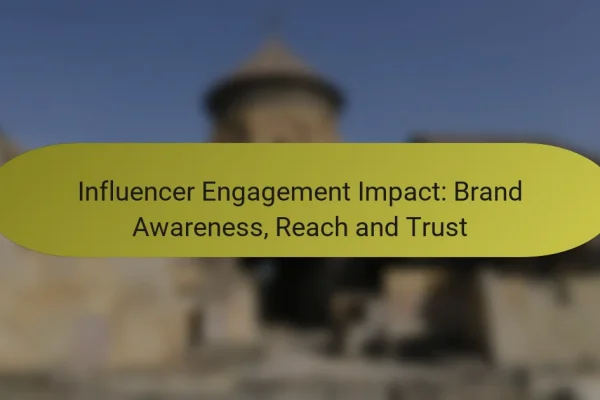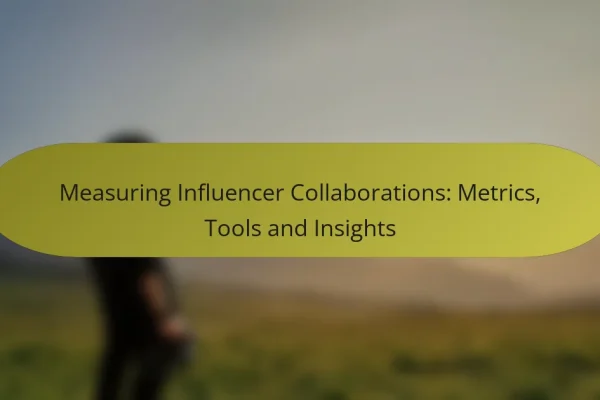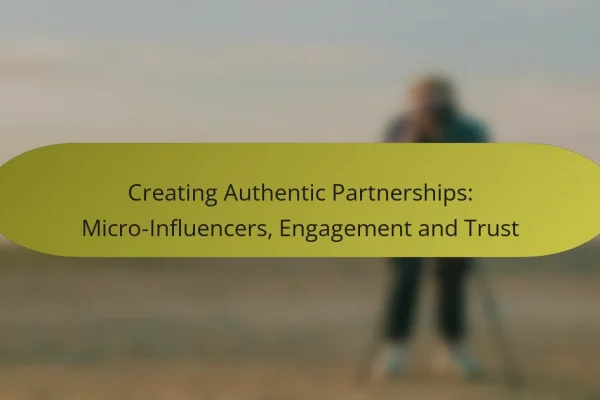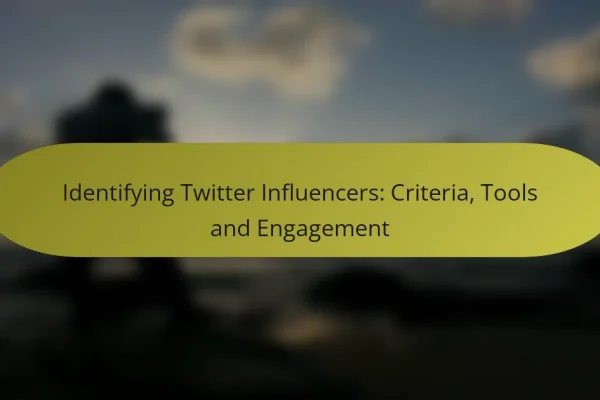How can Twitter influencers enhance brand visibility in Australia?
Twitter influencers can significantly boost brand visibility in Australia by leveraging their established audiences and credibility. Collaborating with these influencers allows brands to reach targeted demographics, enhance their reputation, and engage effectively with potential customers.
Increased audience reach
Partnering with Twitter influencers expands your brand’s audience reach beyond your current followers. Influencers often have thousands to millions of engaged followers who trust their opinions, allowing your messages to be seen by a wider, yet relevant, audience.
For example, a local Australian fashion brand collaborating with a popular fashion influencer can tap into their follower base, potentially reaching thousands of new customers interested in similar styles. This can lead to increased brand awareness and sales.
Enhanced brand credibility
Working with trusted Twitter influencers can enhance your brand’s credibility. When an influencer endorses your product or service, their followers are more likely to view your brand positively, as they trust the influencer’s judgment.
In Australia, consumers often rely on recommendations from influencers over traditional advertising. This shift means that a well-placed endorsement can significantly improve your brand’s reputation and foster customer loyalty.
Targeted engagement opportunities
Twitter influencers provide targeted engagement opportunities that can lead to meaningful interactions with potential customers. By collaborating with influencers who align with your brand values and target audience, you can create tailored content that resonates with specific groups.
For instance, a health food brand might engage with fitness influencers to reach health-conscious consumers. This targeted approach can drive higher engagement rates, as the content is more relevant to the audience’s interests and needs.
What strategies should I use to engage with Twitter influencers?
To effectively engage with Twitter influencers, focus on personalized outreach, collaborative content creation, and exclusive offers. These strategies help build authentic relationships and enhance your visibility within your target audience.
Personalized outreach messages
Crafting personalized outreach messages is essential for capturing an influencer’s attention. Start by addressing them by name and referencing their recent work or interests to show genuine engagement. A well-tailored message can significantly increase your chances of receiving a response.
Keep your outreach concise and to the point. Aim for a friendly tone while clearly stating your purpose. Avoid generic templates; instead, highlight what you admire about their content and how a collaboration could be mutually beneficial.
Collaborative content creation
Collaborative content creation involves working with influencers to produce engaging material that resonates with both your audiences. This could include co-hosted Twitter chats, joint blog posts, or shared videos. Such collaborations can amplify reach and enhance credibility.
When planning collaborative efforts, ensure that the content aligns with both parties’ brands and values. Set clear objectives and responsibilities to streamline the process and maximize impact. Consider using tools like Google Docs for real-time collaboration and feedback.
Exclusive offers and promotions
Offering exclusive deals or promotions to an influencer’s audience can drive engagement and increase visibility. This could be a discount code, early access to a product, or a special giveaway. Such incentives encourage influencers to share your brand with their followers.
When creating offers, ensure they are appealing and relevant to the influencer’s audience. Clearly communicate the value of the offer and provide easy-to-follow instructions for redemption. Track the performance of these promotions to assess their effectiveness and refine future strategies.
Which tools can help identify relevant influencers on Twitter?
Several tools can assist in identifying relevant influencers on Twitter, helping brands connect with individuals who can amplify their message. These tools analyze user engagement, follower demographics, and content relevance to ensure effective collaboration.
BuzzSumo
BuzzSumo is a powerful tool for discovering influencers based on content performance. It allows users to search for topics and see which influencers are sharing the most engaging content related to those topics. This can help brands identify key players in their niche who have a strong presence on Twitter.
To use BuzzSumo effectively, input relevant keywords and filter results by social media platform. Look for influencers with high engagement rates rather than just follower counts to ensure a more impactful partnership.
Followerwonk
Followerwonk specializes in Twitter analytics, providing insights into user bios, locations, and follower counts. This tool allows brands to search Twitter bios for specific keywords, making it easier to find influencers who align with their target audience.
Utilize Followerwonk’s “Analyze” feature to compare multiple Twitter accounts, assessing their influence and engagement metrics. This helps in selecting influencers who not only fit the brand’s image but also have a genuine connection with their followers.
Hootsuite
Hootsuite is primarily known for social media management, but it also offers features to identify and engage with influencers. Users can monitor conversations around specific keywords or hashtags, allowing them to spot influential voices in real-time.
To maximize Hootsuite’s effectiveness, set up streams for relevant topics and track influencer engagement. This helps brands stay updated on trends and identify potential collaborators who are actively participating in discussions relevant to their industry.
What are the best practices for influencer partnerships on Twitter?
Effective influencer partnerships on Twitter hinge on clear communication, mutual benefits, and consistent performance tracking. Following these best practices can significantly enhance visibility and engagement for both brands and influencers.
Clear communication of goals
Establishing clear communication of goals is essential for successful influencer partnerships. Both parties should agree on the objectives, whether it’s increasing brand awareness, driving traffic, or boosting sales. This alignment ensures that both the brand and the influencer are on the same page.
Regular check-ins can help maintain this clarity. Discussing progress and adjusting strategies as needed keeps the partnership focused and productive.
Establishing mutual benefits
For an influencer partnership to thrive, both the brand and the influencer must see value. Brands should offer compensation that reflects the influencer’s reach and engagement, while influencers should provide content that resonates with their audience and aligns with the brand’s message.
Consider creating a win-win scenario, such as exclusive discounts for the influencer’s followers or co-branded content that showcases both parties. This approach fosters a stronger relationship and encourages authentic promotion.
Regular performance tracking
Regular performance tracking is crucial to assess the effectiveness of the influencer partnership. Use metrics such as engagement rates, click-through rates, and conversions to evaluate success. Setting specific KPIs at the outset can help measure progress against goals.
Tools like Twitter Analytics or third-party platforms can provide insights into how well the partnership is performing. Adjust strategies based on these insights to optimize future campaigns and ensure continued growth.
How can I measure the success of influencer campaigns on Twitter?
Measuring the success of influencer campaigns on Twitter involves analyzing various metrics that reflect engagement, traffic, and brand perception. Key indicators include likes, retweets, website visits, and overall sentiment towards your brand.
Engagement metrics analysis
Engagement metrics are crucial for assessing how well your influencer campaign resonates with the audience. Key metrics include likes, retweets, replies, and mentions. A high engagement rate, typically above 1-2%, indicates strong audience interest and interaction.
To analyze these metrics effectively, use Twitter Analytics or third-party tools like Hootsuite or Sprout Social. These platforms can provide insights into which posts performed best and how your audience is interacting with the content.
Traffic and conversion tracking
Tracking traffic and conversions from influencer campaigns helps determine their effectiveness in driving potential customers to your website. Use UTM parameters in your links to monitor traffic sources in Google Analytics. This will allow you to see how much traffic is generated from specific influencer posts.
Additionally, set up conversion goals in Google Analytics to measure actions taken by visitors, such as sign-ups or purchases. A conversion rate of 2-5% is generally considered good for online campaigns, but this can vary by industry.
Brand sentiment evaluation
Evaluating brand sentiment is essential for understanding how influencer campaigns impact public perception. Monitor mentions of your brand on Twitter and analyze the tone of these conversations using sentiment analysis tools like Brandwatch or Mention.
Look for trends in positive, negative, and neutral mentions over time. A significant increase in positive sentiment following an influencer campaign can indicate its success. Aim for a balanced approach, as too much focus on positive sentiment can lead to overlooking critical feedback.
What are common pitfalls to avoid when engaging with influencers?
Common pitfalls in engaging with influencers include failing to align with the target audience and overlooking the importance of genuine relationships. Avoiding these mistakes can significantly enhance the effectiveness of your outreach efforts.
Neglecting audience alignment
Audience alignment is crucial when engaging with influencers. If the influencer’s followers do not match your target demographic, your efforts may yield minimal results. For instance, collaborating with a tech influencer for a beauty product may not resonate with their audience, leading to poor engagement.
To ensure alignment, research the influencer’s audience demographics, interests, and engagement patterns. Use tools like social media analytics to gather insights about their followers. Aim for influencers whose audiences reflect your target market to maximize visibility and impact.
Additionally, consider the influencer’s content style and values. An influencer who promotes authenticity will likely attract an audience that values genuine connections. Collaborating with someone who shares your brand’s ethos can foster a more meaningful partnership and enhance credibility.
